I went backpacking in Morocco for a whole month and had an amazing time. Despite being just a stone’s throw from Europe, traveling in Morocco will surely make you feel like you’re exploring a different world.
Its buzzing cities will keep you happily lost with their endless twisty alleyways, while its landscapes range from vast Saharan dunes to rugged Mediterranean coastlines.
The backpacker scene isn’t as big as in certain other destinations, but there are good hostels in all the cities, not to mention a fun surfer scene all along the coast.
There can be some annoying challenges to deal with (more on this later) but overall it’s an exciting and exotic travel destination. I’ll share with you everything I learned on my trip to help you have the best backpacking trip in Morocco.
Plan your Morocco trip
Morocco backpacking map
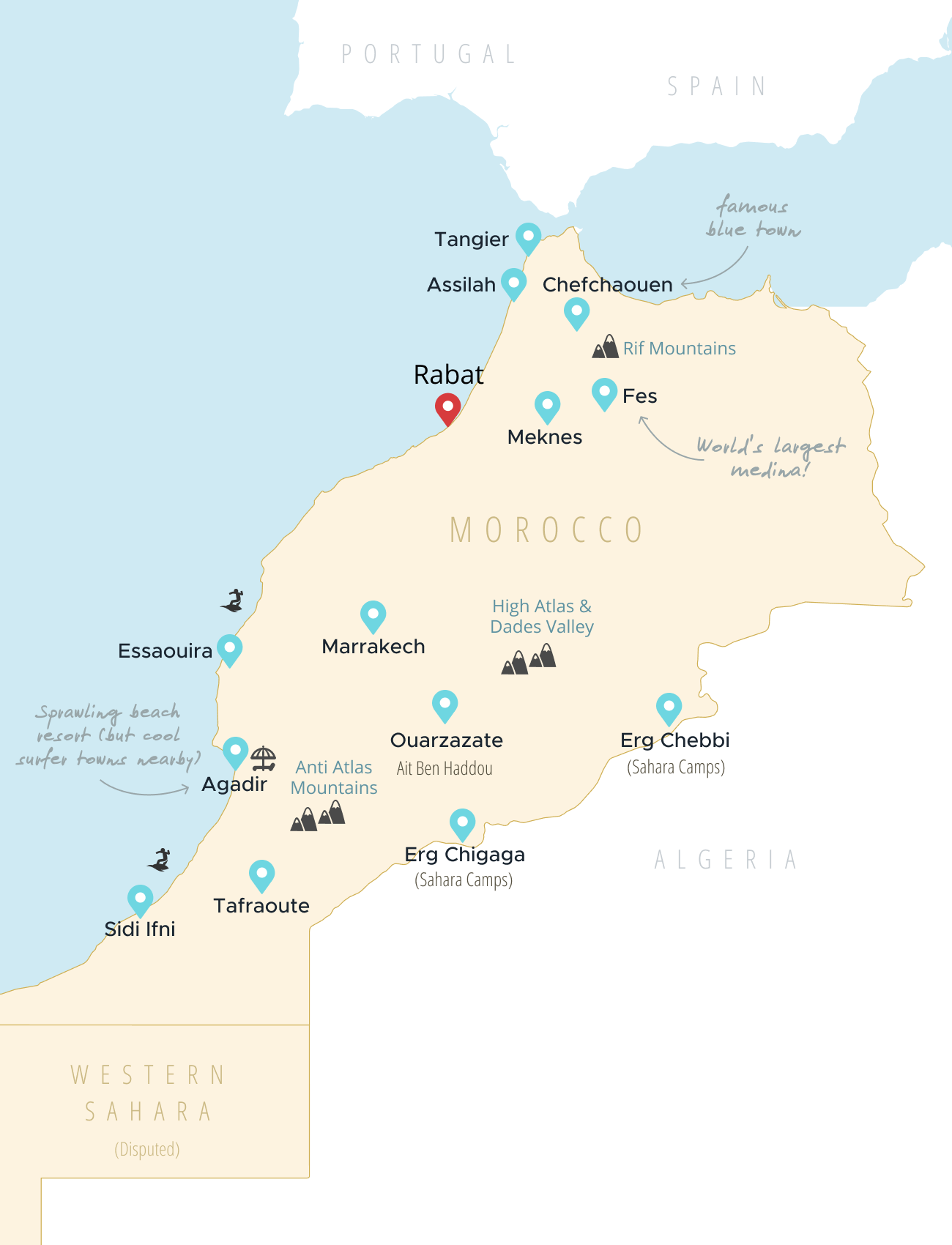
You can choose to focus on different parts of Morocco depending on your starting point.
Morocco is easy to get to thanks to budget airlines flying into Marrakech, Fes, and Agadir from many cities in Europe. The ferry from Spain to Tangier also takes just an hour or so.
There are essentially three clusters of popular destinations in Morocco: one in the north around Fes, one around Marrakech and the High Atlas mountain region, and another one along the Atlantic coast in the south.
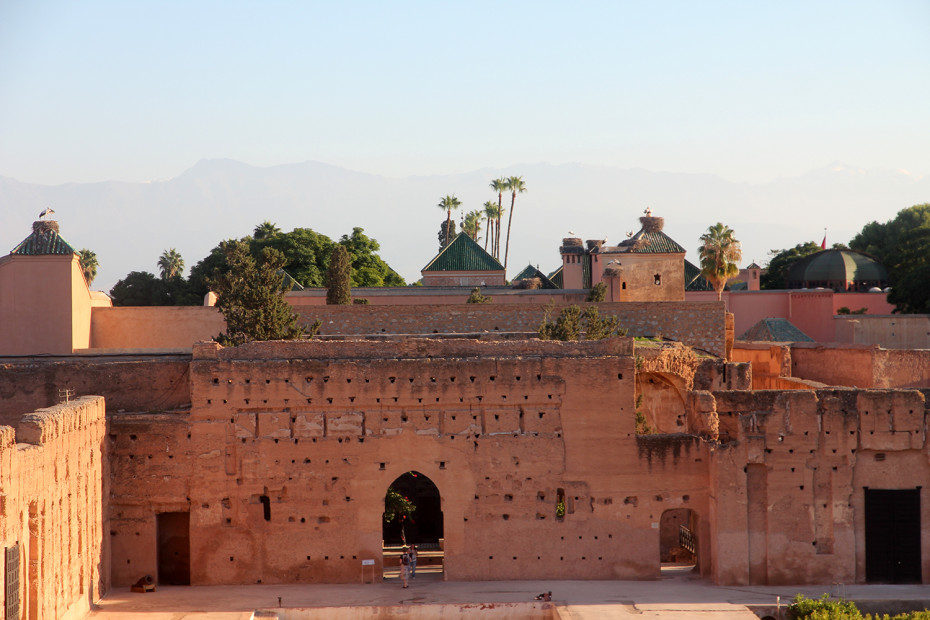
Backpacking routes for Morocco
1 week in Morocco – Marrakech
If you have just 1 week in Morocco and want the classic experience, you could probably simply go to Marrakech, do a day-trip to Essaouira, and do a Sahara tour. It will be a busy week and you’ll cover some obvious places, but you’ll definitely get to see a lot. It’s a common one week in Morocco itinerary.
The Atlantic coast makes for a nice area to target for a more laid-back trip. There are many budget flights going from Europe directly to Agadir, so this can be a convenient entry point from which to start a one-week trip as well.
1 week in Morocco – Fez & north
The north of Morocco makes for a great alternative to the typical Marrakech route. Tangier and Fez will give you the big city experience while a mountain town like Chefchaouen is a perfect base for experiencing Morocco’s nature.
Focusing on the north also makes the most sense if you’re travelling around Europe and you want to add some Morocco to your trip, as northern Morocco is very easily reached from Spain as lots of ferries run throughout the day to Tangier and Tangier Med (a port about 30 minutes from Tangier city). There are also some ferries departing from southern France, so any of these countries can be conveniently combined into one trip.
3 weeks in Morocco
If you have at least 3 weeks in Morocco, you can cover most of the highlights. All of the destinations mentioned throughout this page more or less combine to form the tourist trail, so follow these points either north to south or vice versa. With 3 weeks in Morocco, you can do this route without rushing.
3 weeks is a perfect amount of time to really sink your teeth into Morocco. You can cover several different regions and include some great places beyond the usual Marrakech-and-Sahara tourist trail.
I met some travellers who were happily staying in Morocco for many months on end and who kept finding new places to discover. For me, though, a few weeks seemed enough. This might be totally subjective, but after 4 weeks I was ready to move on and took a ferry to Spain. I love couscous and tagine, but after a while, it seemed these were the only things on the menu — and I guess I’d seen my share of deserts and riads by this time. Still, with 3 or 4 weeks to spare, you can see tons of highlights in Morocco and not get bored in the slightest!
Marrakech & Central Morocco
Marrakech is Morocco’s third-largest city and its main tourist hotspot. It’s an obvious starting point for a Morocco trip.
Many classic itineraries combine Marrakech with sights in the nearby High Atlas region, and often a multi-day excursion to the Sahara desert.
Expect things to be very touristy, but this main trail also has some of the best sights.
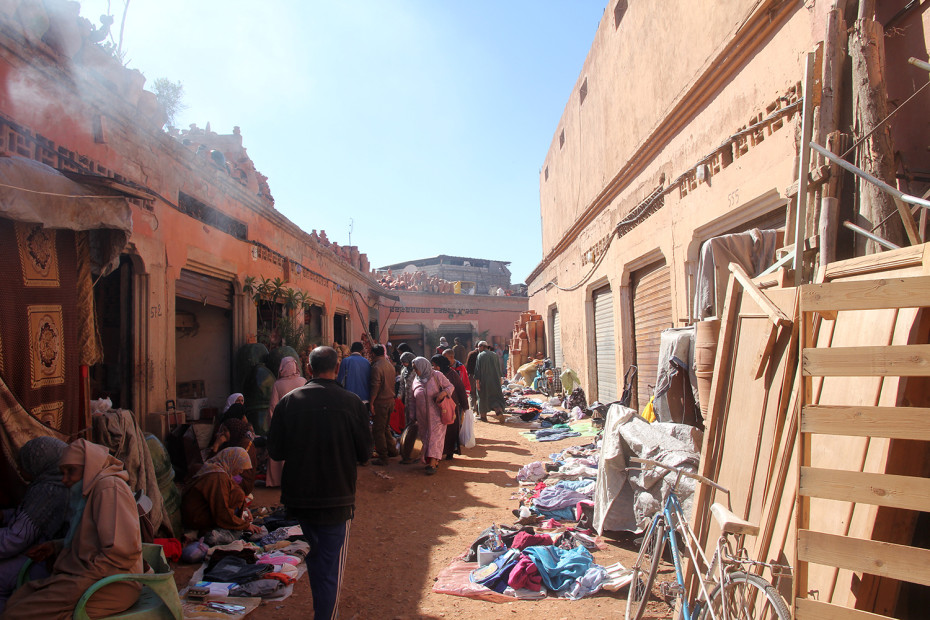
There is much to see and do in Marrakech. You will surely want to explore its medina (old city) with its winding alleys and its many souks (markets). The central square of Djemaa El-Fna is abuzz with activity at night, with all sorts of street entertainment including drum circles and snake charmers.
The visual overload of Marrakech is exciting at first, but you’ll probably want to head to somewhere less stressful soon. The Marrakech medina is a notorious hunting ground for hustlers and fake ‘guides’, so be sure to keep your guard up.
Wandering the Marrakech markets is definitely a fun immersive experience, but there is often quite a bit of hassle. The atmosphere on the markets in Essaouira, Chefchaouen, or other smaller cities is a lot calmer.
Tip: beware of scams and rip-offs!
You can experience a lot of hassle in the medinas of Marrakech and Fes. Be sceptical of people spontaneously following you around to ‘help you’ in these cities—they will almost certainly try to get money off you in dubious ways. Be sure to read my post to learn about some of the common tactics and how to avoid all the scammers.
High Atlas region
Many points of interest are scattered east of Marrakech throughout the High Atlas region. Among these are:
Ait Ben Haddou. This ancient kasbah (fortress) and mud-brick city is not only a UNESCO world heritage site but also a popular filming location, having featured in movies like Gladiator and more recently in Game of Thrones.

Ouarzazate is a town near Ait Ben Haddou. Sights here include the town’s old kasbah, and a movie studio where Morocco has often stood in for other locations such as Egypt in Hollywood movies.
Todgha Gorge is a deep canyon in the High Atlas region offering some spectacular scenery.
The Dades Valley is a green valley around the dades river surrounded by rocky desert, often with views of interesting rock formations.
The High Atlas region is also home to various small berber villages, and is a popular place in Morocco to go hiking and trekking.
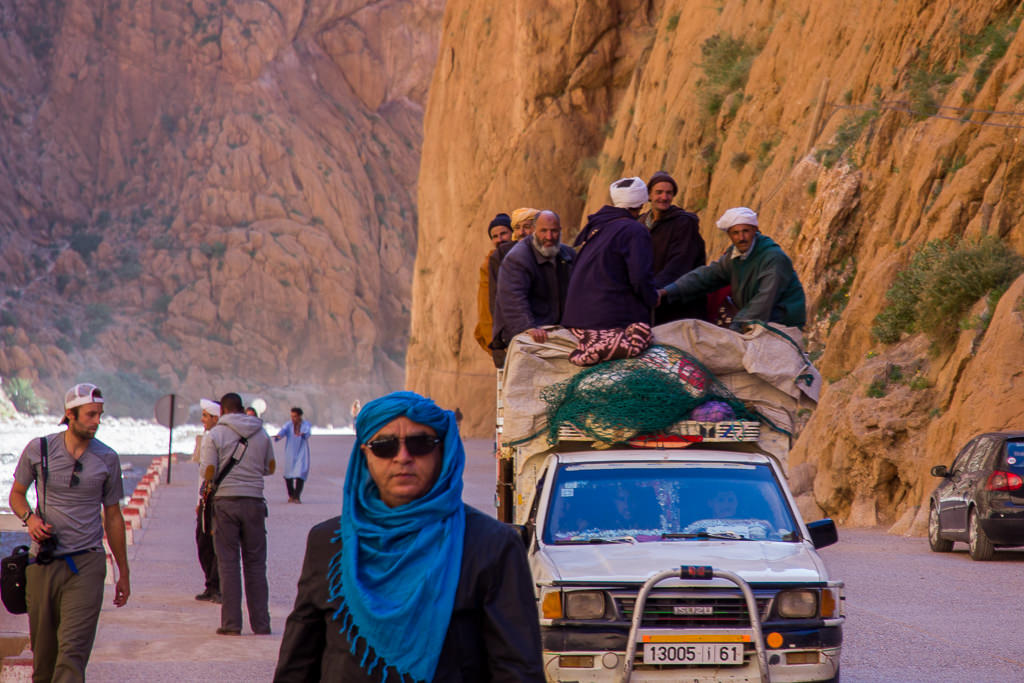
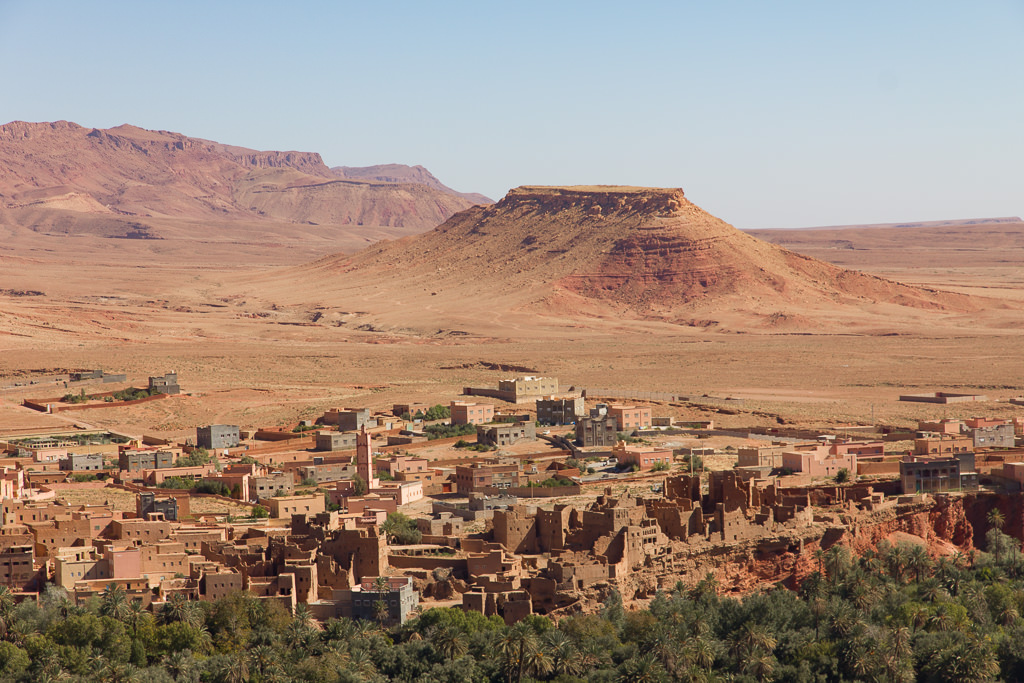
The Sahara Desert
A camel trip in the Sahara is one of those iconic Morocco experiences. It’s understandably at the top of many people’s lists, though don’t feel pressured to include it in your itinerary at any cost.
The two main places where you can dip into the Sahara, Erg Chebbi and Erg Chigaga, are both very far away from everything else. Going there may not make sense for every travel plan—it just depends on what your priorities are and how much time you have. There are many organised 3 or 4 days tours to the Sahara, but they do involve a lot of driving and some early morning starts. If you do it independently, you can of course keep your own pace.
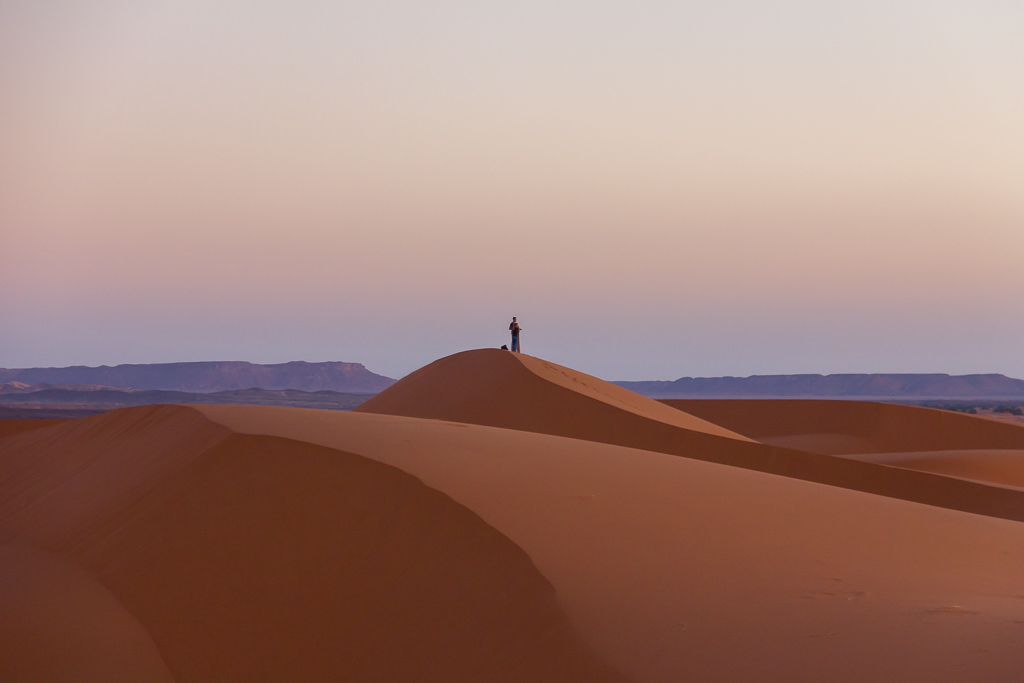
If you’re expecting to see the kind of epic Saharan dunes seen in nature documentaries or movies, you won’t quite find those here. The most impressive Saharan landscapes are said to be deep in Algeria and Libya, which are currently off-limits to travellers. The sand dunes in Morocco are smaller, though you will nevertheless be able to see sand stretching as far as the eye can see.
Riding a camel through the desert is a cool experience and of course a great photo opportunity. The desert is beautiful especially at sunset, when it’s bathed in deep orange hues. Staying the night in a desert camp is fun as well, and there is usually some evening entertainment in the form of some drum sessions around a campfire.
Arguably the best thing to do in the desert is to simply climb one of the dunes at night and gaze at the clear Milky Way. It’s said that there are more stars in the universe than there are grains of sand on Earth, and I highly recommend contemplating this fact while stargazing in the Sahara.
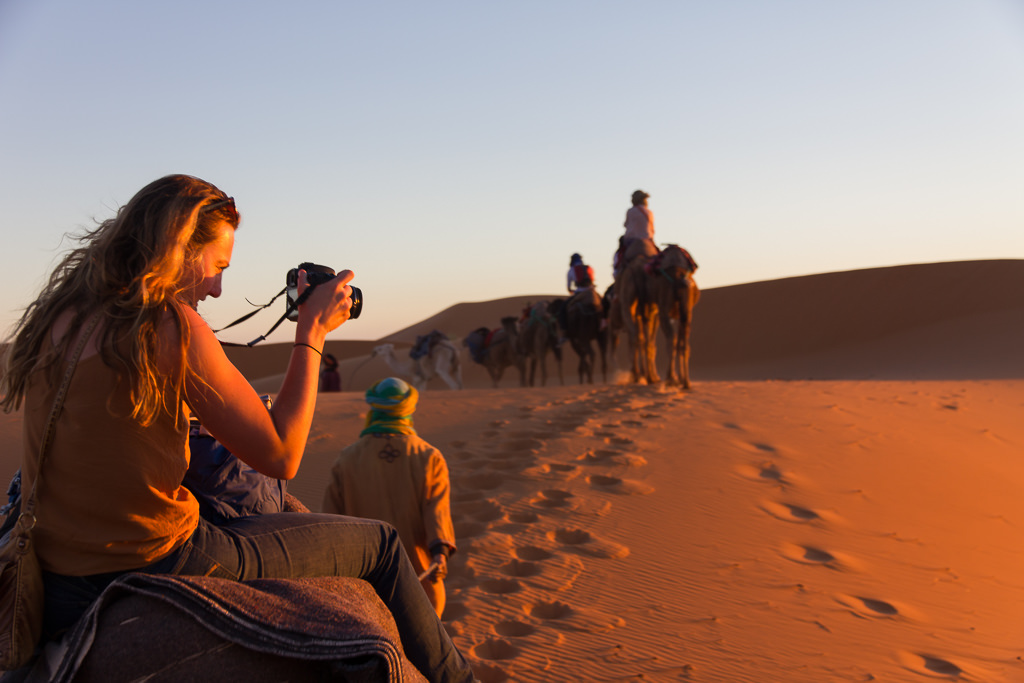
Sahara tours: are they worth it?
Countless local tour operators offer 2, 3 or 4 day trips between Marrakech and the Sahara desert. You can easily book these tours locally anywhere during your trip. They go to the dunes of Erg Chebbi near the town of Merzouga, or in some cases to Erg Chigaga further south. The standard itineraries typically include a camel ride and overnight stay in the desert, and stops at various sights in the High Atlas such as Ait Ben Haddou and the Dades Valley. The tours cover a lot of ground quickly, but they are not without their downsides.
I normally prefer to travel independently but chose in this case to go on a 3-day tour. I was travelling solo and joined several people on a tour, which was easier for this leg of my trip. However, the tours can feel rushed and exhausting because there is simply so much distance to cover, so you will mostly sit in a minivan for hours with only brief stops at most locations
Self-driving or taking local buses will definitely take you longer (probably at least 5 or 6 days starting in Marrakech) but it may give you a deeper experience. If you don’t have much time or you’re on your own, book the tour and just know it will be a somewhat tiring trip.
Southern Morocco
I’m lumping a few places together here as “southern Morocco”, covering mainly the Atlantic coastal areas around Agadir and the Anti Atlas mountainous inland areas. Agadir and Essaouira are the main tourist draws, while other areas here are relatively less visited and well worth it if you wish to avoid the crowds. The Atlantic coast is very popular with surfers and there are lots of surf schools around, though the big waves also mean that not all of the beaches are as good for swimming.
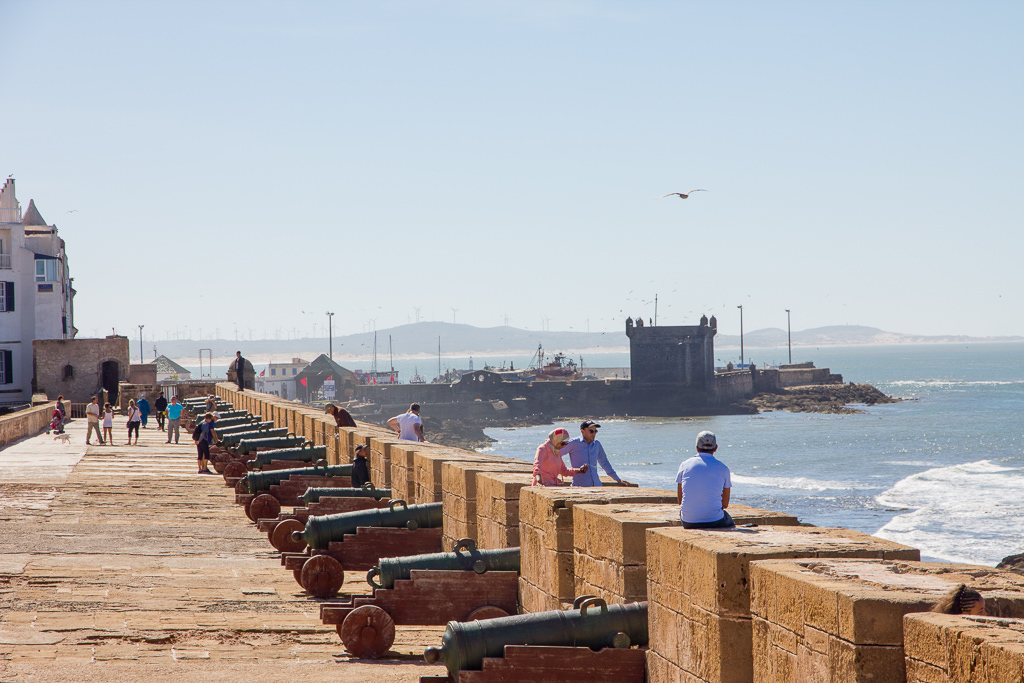
Essaouira is a pleasant coastal city just 2,5 hours from Marrakech. When I was researching my Morocco trip many people online seemed rather ‘meh’ on Essaouira, often saying you can “see it in a single afternoon”. But when I arrived in Essaouira from Marrakech I immediately knew I’d like it, as the atmosphere just felt so much more relaxed. I ended up staying 4 nights.
Your own impressions of Essaouira will probably depend on what type of trip you are on. If you are mainly after sightseeing, then maybe Essaouira is just a day-trip kind of place. The main sight here is the old coastal fortress, which also happened to feature in Game of Thrones. It’s easily ticked off the list.
If however you enjoy just soaking up the atmosphere for a while, then you may well like this town. It’s got a wonderful sea breeze, nice restaurants, interesting markets, and a couple of decent beaches within a 30-60 min drive distance (Sidi Kaouki beach just south of Essaouira is nice). There are several good backpacker hostels in town that can make you feel at home.
I also quite enjoyed shopping for souvenirs in Essaouira, as the salesmen are less intense than those in Marrakech or Fez (even though haggling is still necessary). Don’t miss a visit to the fish market for seeing a little slice of Moroccan life as well—you can also buy some fresh fish here and ask a restaurant to cook it for you.
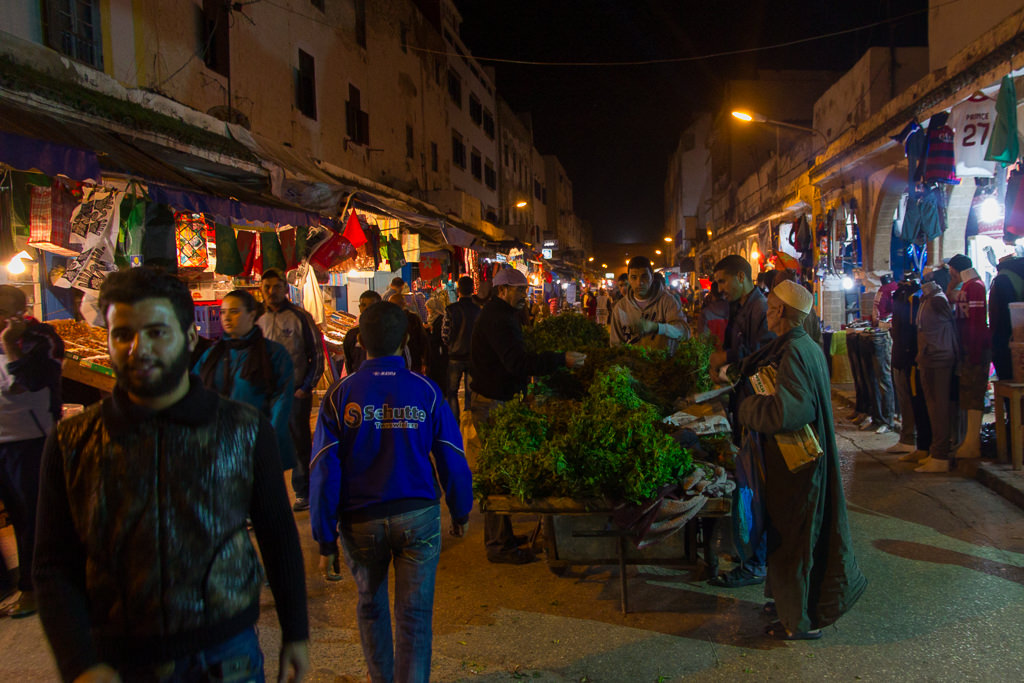
Agadir further to the south I have less to say about, as it’s more of a standard resort built for package tourism and fly-and-flop holidays, which is not my kind of thing. If you’re travelling independently, you might not find it as interesting as many other places.
Just 10 km above Agadir you can find Taghazout, which is a much nicer beach town popular with surfers. Taghazout is also a great base from which to go trekking or hiking into the Anti Atlas, with many guided treks departing from here. If you want a much less commercial and smaller-scale place, I’d recommend ignoring Agadir and heading straight for nearby Taghazout. If you like to stay in hostels, you’ll find them only in Taghazout and not in Agadir.
Sidi Ifni is included in Lonely Planet’s top 20 destinations for Morocco, which is partly why I went there. The guide describes it with all sorts of flowery language, speaking of ‘art deco architecture’ and ‘fascinating Spanish influences’, but I found none of those things. Instead, it honestly struck me as an unremarkable sleepy seaside town with little to see or do. The elderly French tourists who set up their RV camper vans along the seafront seemed to like the place, but it’s a bit of a mystery why the Lonely Planet editor was so enamored with it.
If you have time to spare then Sidi Ifni is worth a look, but I would probably temper what some of the guidebooks have to say. Arguably of more interest than Sidi Ifni itself are some of the smaller nearby seaside towns (like Mirleft) and interesting beaches with red rocky cliffs (like Legzira beach 10 km north of the city).
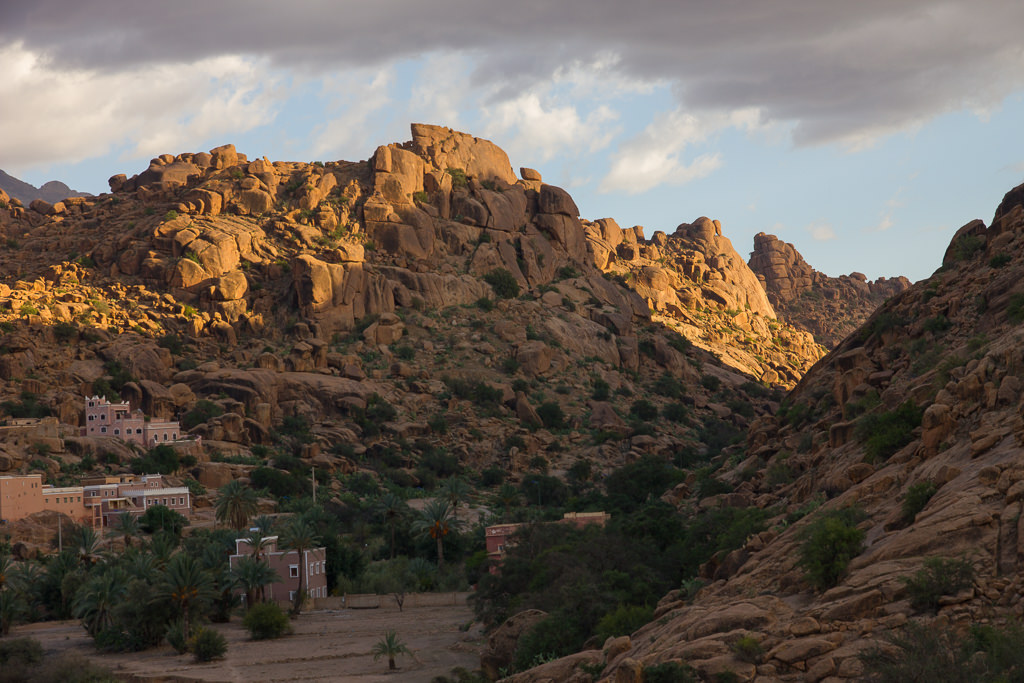
Tafraoute however made me very glad to have visited southern Morocco. Located in the Anti Atlas mountain region, it is surrounded by gnarly rock formations that reminded me somewhat of northern Mexico. The town itself is very pleasant and welcoming with some good accommodation options, a local market, and a handful of restaurants.
There are some groups of day-trippers coming here on tours from Agadir, but it’s much nicer to go to Tafraoute independently and spend a night or two there. Tafraoute a great base for trekking as well as mountain biking. You can rent mountain bikes from two companies here, who will drop you off at a trail that takes you past many oases and interesting rock formations. Tafraoute takes a little while to get to (it’s 6 hours from Agadir) but I found it more than worth it for the surrounding landscapes alone.
Northern Morocco
The north of Morocco is home to (among others) the city of Fes, various Mediterranean beach towns, and several small mountain towns including the almost painfully picturesque Chefchaouen.
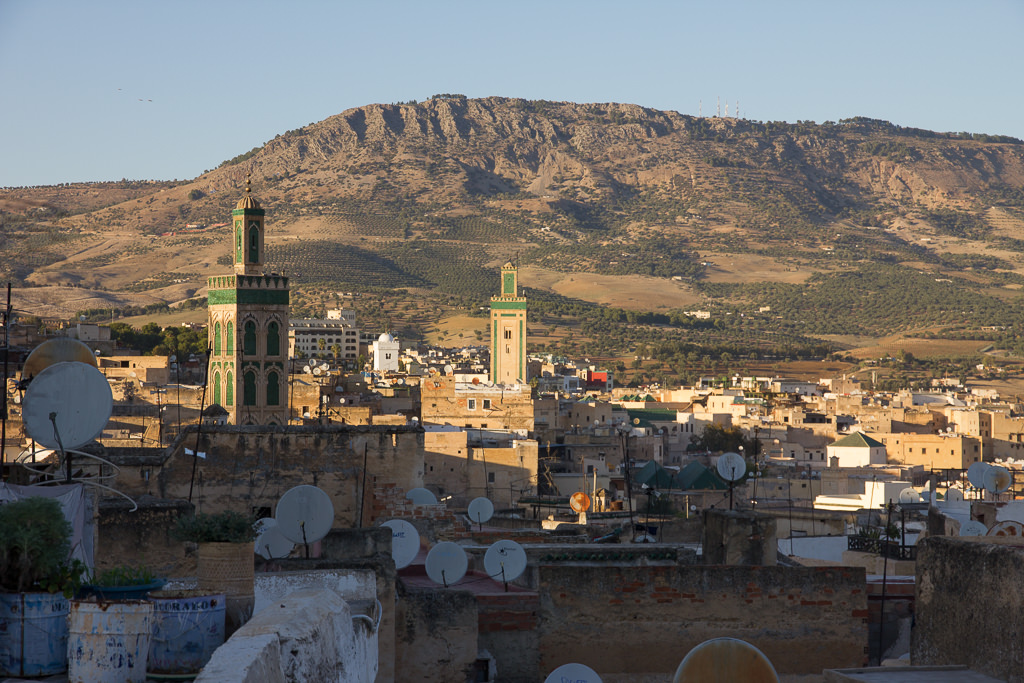
Fes is famous for having two ancient medinas (old cities) that together form the largest medina in the world. It’s a big maze of narrow passageways where the main arteries are lined with shops and market stalls, but where its many tendrils are sometimes just a meter wide and often eerily quiet. If Fes is your first stop in Morocco then its medina might be slightly overwhelming, so take your time to adjust to the city. If you have already seen other medinas in Morocco then the one in Fes still takes the cake, as you can just get lost endlessly here in ways you can’t in the smaller medinas.
Chefchaouen is a town famous for its blue and white houses, and it’s quite possibly the prettiest town in Morocco. It is a little reminiscent of Mediterranean towns in Greece like Mykonos, with lots of cute streets as well as a small and pleasant medina. Chefchaouen is a nice place to hang out for a while, though it’s also a good base for hiking and trekking; you can climb one of the surrounding mountains on a day hike, and there are companies organising multi-day treks as well. A popular point of interest in the area is the so-called ‘Bridge of God’, a 25m high rock formation that extends over a river valley.
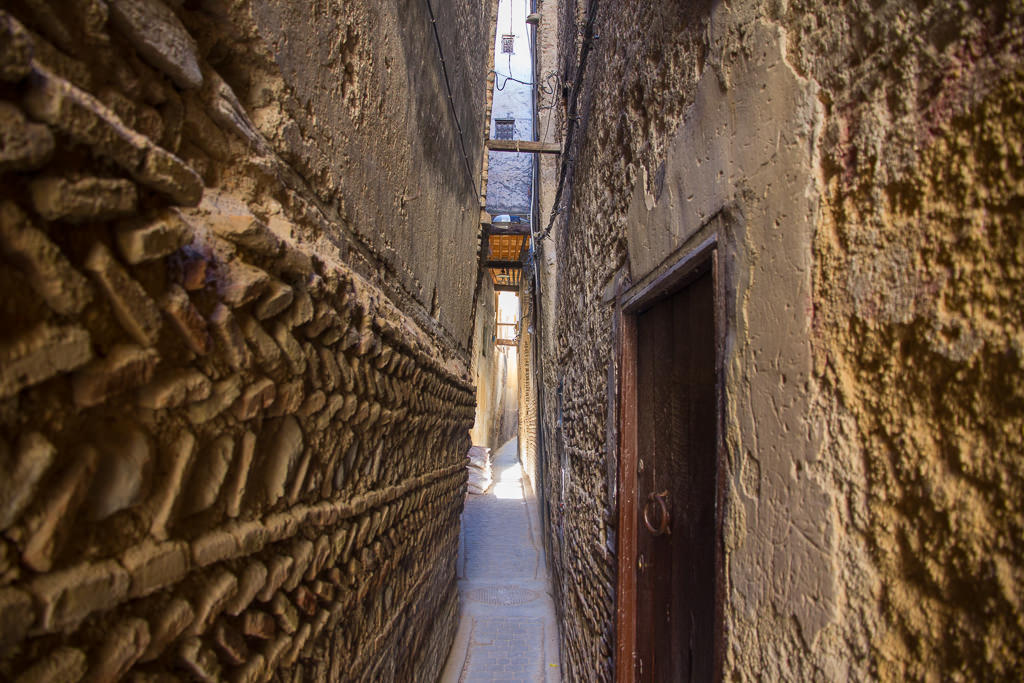
Chefchaouen is also known for its more or less open sale and production of marijuana. Guides do point out that it’s still a “family friendly” destination, by which I suppose they mean that you won’t be around people smoking hasj if you don’t want to. It’s true that Chefchaouen shouldn’t be pigeonholed as there’s clearly it has a lot of reasons to visit. Don’t miss it as it’s one of the Morocco highlights.

Other popular destinations in the north include the Roman ruins of Volubilis near Meknes, the picturesque town of Moulay Idriss and the seaside town of Asilah near Tangier. These are all places worth looking into if you’re going to northern Morocco.
Cities such as Rabat, Casablanca and Tangier typically don’t feature in many tourist’s travel plans. I must confess I also haven’t been to these cities myself, as I kept hearing somewhat lukewarm stories from people who had, as they are modern cities with less to see for visitors. However, I have also heard some amazing stories from travellers who went couchsurfing in these cities, and who discovered some amazing local experiences that made up for a relative lack of sights. It seems these parts are best enjoyed when you have a local connection.
Morocco travel tips
Language
English is generally spoken by hotel or hostel staff and professional tour guides, but beyond this you’re unlikely to find many English speakers. French is spoken much more widely as a second language, so if you have any French knowledge it will certainly help you with basic communication.
Locals seem to appreciate if you try to speak a few words in the local language, but keep in mind that multiple languages are spoken in Morocco. Arabic is most common, followed by Berber. Greeting a Berber by saying “salaam” in Arabic surely won’t offend them, but might not win you the usual brownie points either. I admittedly got confused about who is Arabic or who is Berber eventually, and simply began playing it safe by greeting people with “bonjour”…
Dressing appropriately
There are exceptions with metropolitan cities or younger generations, but Morocco is a fairly conservative country overall and some sensitivity in dress style is required. I was told that the general rule is to cover your shoulders, and not to wear very short trousers (but knee-height shorts are okay). Tank tops are generally a no-no in Morocco. All of this goes for both genders.
For women, blending in will help reduce unwanted attention from men (which is a common problem for female tourists in Morocco). While you don’t have to wear a headscarf, it’s worth draping a scarf over your shoulders or wearing trousers or a long dress that covers your legs. Occasionally you’ll see a less considerate tourist walking around in hot pants and a tank top, but this can be very offensive to some but also increase the level of hassle exponentially. You can read more about what to pack for Morocco.
Alcohol
Due to the Muslim faith, alcohol is not widely available in Morocco. That doesn’t mean it’s impossible to find alcohol, but it isn’t part of the culture.
If you’re expecting to have a nice cold beer on a restaurant patio, you’ll usually be disappointed. Bars do exist: some cater almost exclusively to tourists, others are kinda weird local dives filled only with men. Hostels or guesthouses will sometimes sell a few beers if you inquire.
If you find a European style supermarket like Carrefour they will carry alcohol, and sometimes there’s a local liquor store in town. If it’s important to you, alcoholic drinks are basically something you have to seek out rather than expecting it everywhere.
Transportation
Comfortable tour buses from the companies Supratours and CTM connect the main destinations. Some popular routes (such as Marrakech to Essaouira) have Supratour or CTM buses pretty much every hour. Other routes, such as those to a small town like Chefchoauen, tend to have only a couple per day, so here it’s worth booking ahead. If there isn’t a comfy Supratour or CTM bus available right away, you may also be able to find a creaky local bus that will get you there a little slower.
There is one major train line running in Morocco, going from Tangier to Fes, Casablanca, Rabat, and Marrakech. This is a comfortable option, especially if you want to cover long distances between northern and central Morocco. It’s worth getting the 1st class upgrade, which is a bit more comfortable but still isn’t so expensive on a Western budget.
Sometimes it works out well to take a taxi between towns or cities. I did this on a couple of 1 or 2 hour legs in my journey where buses weren’t immediately available (for instance between Tiznit and Agadir, and between Tangier and the Tangier Med ferry terminal). A shared intercity taxi might cost around 30 Dirham for a 1 or 2 hour journey, though keep in mind that in Morocco it’s not uncommon for up to 7 people to share one regular size taxi (with 2 people sharing the seat next to the driver). While somewhat uncomfortable, it’s fun to travel in this local style at least once.
Traveling as a woman
Female travelers are sure to experience Morocco very differently from men. During my time in Morocco, women told me of many issues around unwanted attention from men, including catcalling or even men following them around. Dressing conservatively may help a bit but sadly does not eliminate this everyday annoyance. The behavior doesn’t occur when women are accompanied by a man and is by far the worst when walking around alone.
It’s honestly one of the first topics that come up whenever I speak to women who have been to Morocco. While not necessarily threatening, many women nonetheless are clearly very irritated by this aspect of traveling in Morocco. After a while, it can get seriously draining. I can only imagine: the normal level of street harassment (from salesmen, etc.) faced by men is already pretty tiring, and women may have far worse to deal with including sexual harassment.
I can’t share any personal experiences, for obvious reasons, but several female travel bloggers have written insightful posts on this topic. These posts focus on solo travel, but I highly recommend giving them a read even if you’ll be traveling together.
- How to Travel as a Woman Alone in Morocco Without Going Insane – This American Girl
- Solo Female Traveler – What Precautions To Take In Morocco – Bewildered in Morocco
- Travelling Morocco As a Solo Female – Neverending Footsteps
Some links may be affiliate links, meaning I may earn commission from products or services I recommend. For more, see site policies.
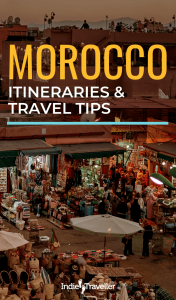
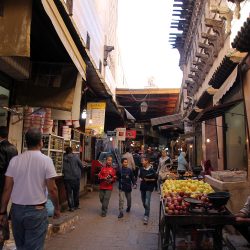
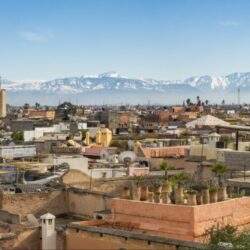




Great article very interesting to read I can’t thank you enough for this amazing tips. Gladly to support you and to follow your website.
Hello, I am Lahcen from Morocco, I really like your article and very happy that you enjoyed your Moroccan experience. We really hope that covid ends soon and back to the normal life and people travel again and meet new people. Thank you so much for the great page about Morocco and welcome to your second country.
Very interesting blog & helpful info about morocco, Thank you for sharing your experience with us.
I really appreciate you leaving resources for female travellers written by women!
Morocco is really a fairy-tale land; heaven you will never forget. I am going on my 3rd holiday and I can’t get there fast enough.
It’s great, Nice
Hey Marrek…. Your name resonates Maaraketch. Fun things a part….your itineraries on Morocco are marvelous. And, your caution on scams and rip offs is very valuable. Great Job!. Thanks for sharing!!!
I was in Marrakech and Casablanca and I fell in love. Casa with the beach, Morocco Mall and beautiful Hassan II mosque and Marrakech is… Marrakech. There´s no word to describe that city.
I wish I’d taken your advice regarding the 3 day Sahara tour Marek, it was indeed rushed and exhausting! If I were doing it again I’d spend more time around the Dades Valley instead – stunning area and such a shame to pass through it so quickly.
Hey Steph. I had the same thought when I passed through the Dades Valley. So beautiful, and I didn’t get to spend enough time in it!
First of all, thank you for the efforts and the great articles concerning your Moroccan experience.
We live in Marrakech and get reports from travellers and their experiences when surfing the medina or at least some districts. In general both genders are offered things for sale in shops or invited for cups of tea, some have reported their credit cards were charged twice either accidentally or meant by the merchant but managed to get their money back. Some have have reported being approached by young guys to invite them out. In terms of crimes few case reported their camera was stolen or purse but not really bad to make the travellers worry that much as long as they are vigilants.
Thank you for your beautiful sharing. Its very helpful tips for those who are interesting in visiting Morocco.
Hi Marek,
Gorgeous pictures. I love the idea of the day trips from Marrakech . I would also recommend tafraoute and Tizinit.
sorry, I was wondering if you could share the name of the tour company you took into the desert? Unfortunately, like one of your readers, the costs are..exorbitant. Normally I would try to find tours in Fez, but it may take up a lot of time which may detract from looking around fez itself
I booked it from the hostel I was staying at (here’s their site). I can’t recall the exact cost for the trip but it was under $100.
Hello everybody, I’m a moroccan guy who would like to Thank all visitors to Morocco, about their great comment!
Here is also some tips for those who are interesting in visiting Morocco:
-Morocco is at its most beautiful in spring (mid-March to May) when the landscape is green and lush, making for spectacular mountain hiking. Morocco is also lovely in Autumn (September to October) when temperatures are very pleasant.
-Weather in May :
Expect daytime temperatures to reach 27°C with on average 9 hours of sunshine per day in Morocco in May.
-Popular Morocco destinations for those short on time : Marrakech with its famous square, Fes with its old Medina, Ride camels in Merzouga desert, Ouarzazate ( See the old Kasbah Of Ait Ben Haddou)…
All the best!
Morocco is a rich and colorful place. It’s definitely worth traveling to. Great job creating such a detailed write up as always! The way you had this organized makes its easier to plan out for reader!
Hi! I went to Taghazout to surf, as you mention in your blog post, and it was an amazing experience! I had never tried it before, but I learned the sport quickly and it was great! I didn’t stay at Lunar Surf House as you recommend, but at Adventurekeys surf camp instead. It was a great place and lovely guest. The staff was amazing and the guide was good at finding the best spots for the day. I can really recomend the hostel to other travelers and you, next time you are going.
Great and helpful article. Morocco is beautiful! Keep up the good work!
Best wishes
I did not have a nice time in Morocco. We booked a riad in Marrakech that had good overall score and comments over booking.com. The place was really nice. Next day we booked the guide who did not know English and who took us shopping leaving us alone in the stores and we ended up overpaying for stuff. We were furious. We paid this tour 50 euros to get cheated and the only reason we took a guide from riad was because we thought it was safer like this. At the end they gave us another guide next day but the money we overpayed we never saw again. Also I never felt secure like I can look around by myself even being there with my boyfriend. The moment you are not with a local person everybody tries to take your attention saying that the road is closed, overcharge you etc. Medina is also confusing first days and its difficult to find recommended places, where you can pay these affordable prices, usually tourist restaurants charge you Europe prices. Morocco is not a cheap destination.
Hey Marek!
This post is very helpful as I plan to travel solo to Morroco for a week next month. As a female traveler I do have my concerns about overnight train trips, let´s say from Fez to Marrakech. Would you recommend taking the train at night? I am also having troubles finding a good deal with desert trips as they give me the “solo traveler” price, and I can´t find people to join me yet!
I have not taken a night train in Morocco but given that it’s a closed and supervised environment I imagine there aren’t major issues to worry about. Always look after your belongings though.
It is possible to do the desert trip without a solo supplement. I booked my trip locally through a hostel and had a private room in the hotels and a shared tent (with 10 or so people) for one night in the desert, and this was without paying extra. You may be able to get a better deal locally than on the internet… there are loads of tour companies heading to the desert every day.
Hope this helps!
Marek, thank you very much for sharing a link to our guide to Marrakech, we feel very honoured! We loved reading your guide and have always been fans of your blog. We wish you safe travels and hope to bump into you one day for a drink.
Dom & Claire (Flashpacking Duo)
That’s awesome to hear, I really like your guide and blog! Hopefully our paths will cross sometime 🙂
Hello,
as moroccan , i can see that this post contain many false informations like language , Mosques ( you can enter just ask before ), Dressing appropriately ??
and the map in the top is not complete , you can travel until un south and you can reach dakhla if you like surf
You’re welcome to give any corrections. Note that underneath the map I explain why the Western Sahara isn’t displayed on the map – I’m focusing on the most-visited areas. The general advice for visitors in Morocco is not to expect entry to mosques as a non-Muslim, and I personally found no examples to the contrary. However, if you have more specific information, readers may appreciate you sharing it!
Hello 🙂
What is the best time to visit Morocco climatically? When did you visit it?
Thanks!
I was there in Oct, which is in the shoulder season and so not too busy. The weather was also very pleasant (hot/sunny during the days, cool at night.) I believe the difficult months climate-wise are Jun-Aug when it gets super hot.
Thanks for posting! I used this as a guide for planning my trip and found it really useful! Im also not big on tours so decided to rent a car to travel through the desert at my own pace. I did however join the “tour” out into the dunes for the night. I dont believe you can do this on your own. It was well worth it! http://ramblinmurph.com/2016/05/23/10-day-morocco-itinerary/
Glad it was useful! That’s a great writeup of your trip – I’ve also linked it in the post 🙂
Thanks, Marek!!
Hi Marek!
Thank you so much for linking to our Imessouane post! It’s an honor to be featured on your page. Hopefully the word will spread and many more people can discover this amazing place.
Mari & Liam (The Ramblers) ✌️
I enjoyed reading your report about Imessouane! It sounds like a wonderful low-key place 🙂
Hi Marek,
This was truly a wonderful and descriptive guide, Thanks a lot !
I am planning a trip to Morocco next year and would really appreciate if you would share the overall budget of this trip , Looking forward to your revert
It’s hard to say as I wasn’t taking many notes of my expenses. I guess I spent at most around $1000 / €1000 in one month.
Great guide! I keep this for later 🙂 Thanks for sharing
You’ve really captured what would be described for many as an undiscovered jewel of Africa.
Hey Marek thank you so much for mentioning my website. I totally love this page you made about Morocco. Any other time around please let’s meet, I invite you for a cup of tea! greetings all the way from Ouarzazate – south Morocco. Happy New 2016 – full of awesome travels! bye
Thanks for your kind words João. I love your blog! Happy 2016 and must try to meet next time 🙂
I’ve seen a bunch of articles about Morocco lately- it seems to be the place to go but this is the most in-depth I’ve come across. Hoping to make it at some stage next year so thanks for the ggreat info!
Very interesting and helpful guide. I never really thought of Morocco as a backpacking destination, but this has definitely changed my mind. Seeing as I’m based in Spain at the moment, I think a trip over the Mediterranean is called for!